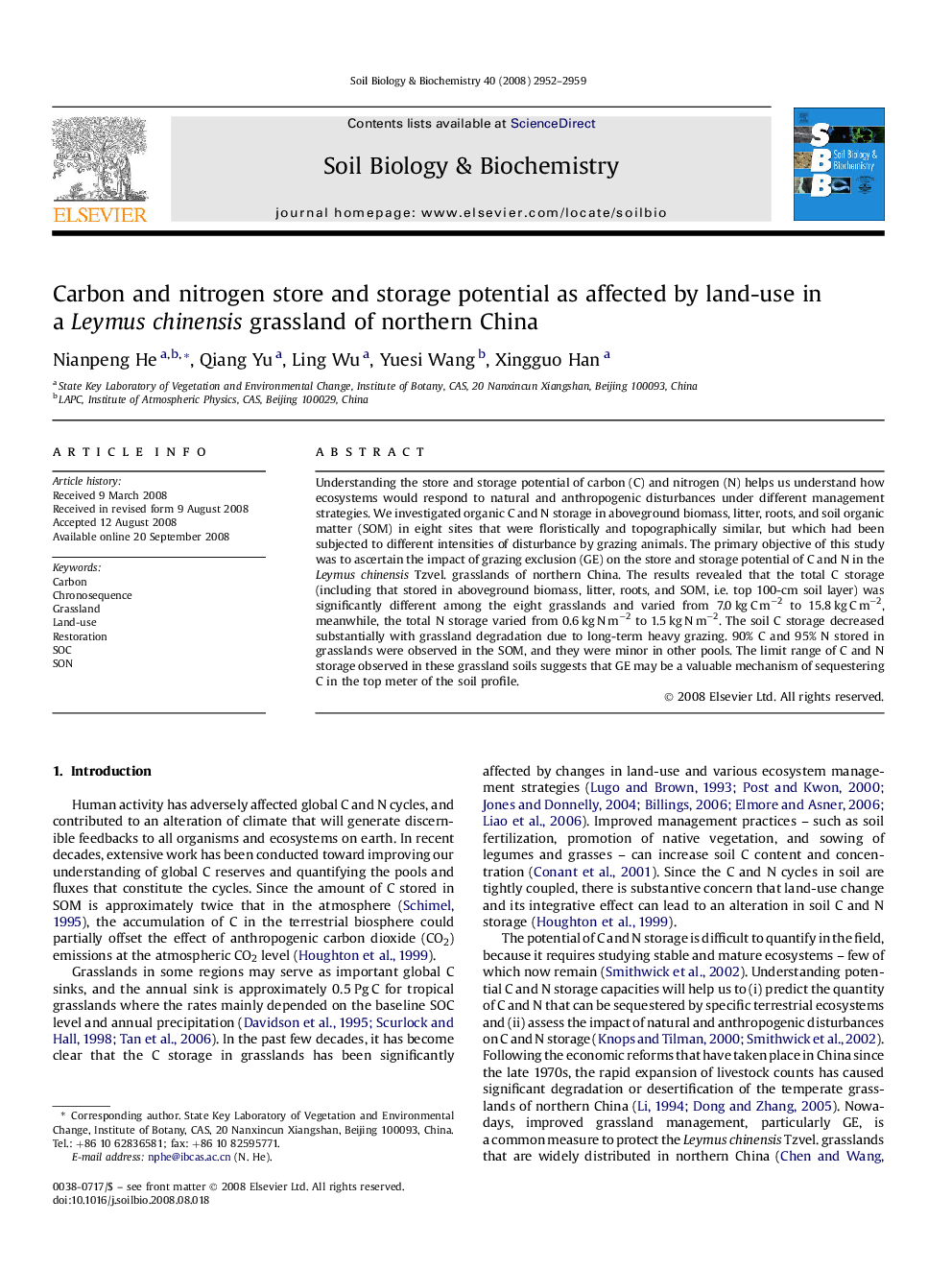| Article ID | Journal | Published Year | Pages | File Type |
|---|---|---|---|---|
| 2026294 | Soil Biology and Biochemistry | 2008 | 8 Pages |
Understanding the store and storage potential of carbon (C) and nitrogen (N) helps us understand how ecosystems would respond to natural and anthropogenic disturbances under different management strategies. We investigated organic C and N storage in aboveground biomass, litter, roots, and soil organic matter (SOM) in eight sites that were floristically and topographically similar, but which had been subjected to different intensities of disturbance by grazing animals. The primary objective of this study was to ascertain the impact of grazing exclusion (GE) on the store and storage potential of C and N in the Leymus chinensis Tzvel. grasslands of northern China. The results revealed that the total C storage (including that stored in aboveground biomass, litter, roots, and SOM, i.e. top 100-cm soil layer) was significantly different among the eight grasslands and varied from 7.0 kg C m−2 to 15.8 kg C m−2, meanwhile, the total N storage varied from 0.6 kg N m−2 to 1.5 kg N m−2. The soil C storage decreased substantially with grassland degradation due to long-term heavy grazing. 90% C and 95% N stored in grasslands were observed in the SOM, and they were minor in other pools. The limit range of C and N storage observed in these grassland soils suggests that GE may be a valuable mechanism of sequestering C in the top meter of the soil profile.
